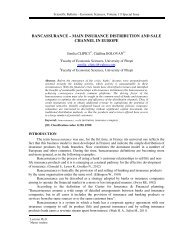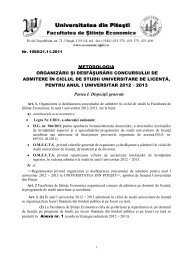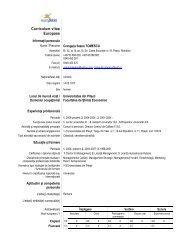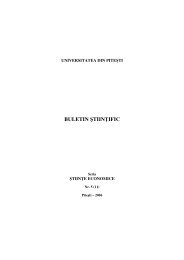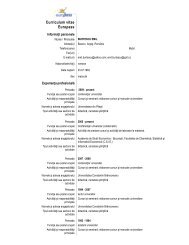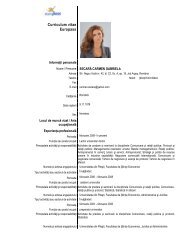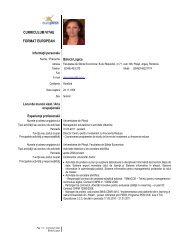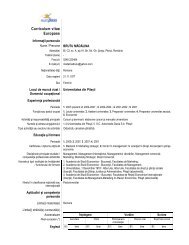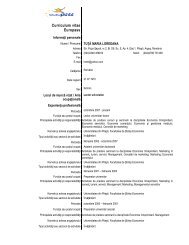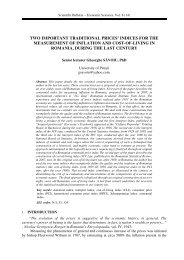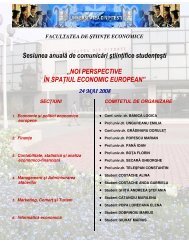buletin Åtiin ific - Facultatea de Stiinte Economice - Universitatea din ...
buletin Åtiin ific - Facultatea de Stiinte Economice - Universitatea din ...
buletin Åtiin ific - Facultatea de Stiinte Economice - Universitatea din ...
- No tags were found...
You also want an ePaper? Increase the reach of your titles
YUMPU automatically turns print PDFs into web optimized ePapers that Google loves.
The importance of actuarial accounting for the assessment of the elements of the financial statementsSuppose the company ALPHA owns an asset that they intend to sell for a sale priceassessed by the assessor to 755,000 m.u. The costs related to the preparation of the asset for saleare 5,500 m.u.Consequently, the net fair value =fair value – costs to sell =755,000 m.u.- 5,500m.u.=749,500 m.u. The costs to sell are the costs incurred to dismantle the equipment, packagingcosts, as well as the costs with the documents necessary to close the <strong>de</strong>al.3. The assessment of the utility value of the assetFor the calculation of the utility value of an asset, the following aspects will be taken intoaccount:- the assessment of the future cash flows that the entity expects to obtain for the respective asset;- the expectations about possible variations in the amount or timing of those future cash flows;- the time value of money, <strong>de</strong>pen<strong>din</strong>g on the current market risk-free rate of interest ;- the price for bearing the inherent uncertainty in the asset ;- other factors, such as illiquidity, that market participants would reflect in pricing the future cashflows the entity expects to <strong>de</strong>rive from the respective asset.The assessment of the utility value of an asset implies following the steps below:- the assessment of the future cash entries and outflows generated by the continuous usage of theasset and by its transfer;- the application of the a<strong>de</strong>quate discount rate to these cash flows.This mo<strong>de</strong>l takes into account two important factors:- the future cash flows (cash entries and outflows <strong>de</strong>rived from the continuous usage of anasset, and from the transfer of the asset);- the a<strong>de</strong>quate discount rate for these future cash flows.The calculation of the utility value and that of the impairment loss of an asset or a cashgeneratingunit 20 is emphasized in the application below:One item of technological equipment that has three years left of its useful life is used forthe manufacturing of a product for which the <strong>de</strong>mand on the market is going to increase by 10%in the next few years. Taking into account that the net income from the sale of the products in theprevious accounting period N was 12,000 m.u. and the a<strong>de</strong>quate discount rate for the cash flows<strong>de</strong>rived from the technological equipment was 5%, we should assess the utility value of that assetThe utility value is then assessed by applying the a<strong>de</strong>quate discount rate to the future cashflows as illustrated in the table below:Table no.1The calculation of the utility valueYear Cash flowsDiscount rate The discountedm.u.valueN+1 12.000 X 1.10=13.200 (1+5%) -1 =0.9524 12.572N+2 13.200 x 1.10 =14.520 (1+5%) -2 =0.9070 13.170N+3 14.520 x 1.10= 15.972 (1+5%) -3 =0.8638 13.797The utility value of the technological equipment 39.53920 Liliana Malciu(Feleagă ), based on R.T. Tully, IAS 36 Impairment of Assets, Accountancy Tuition CentreLimited64




